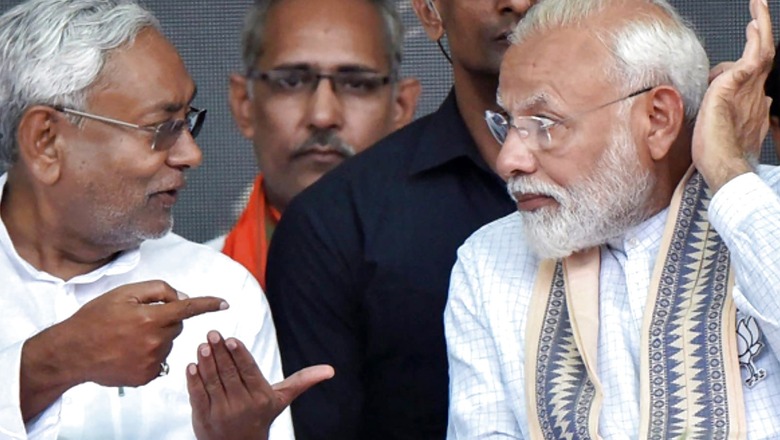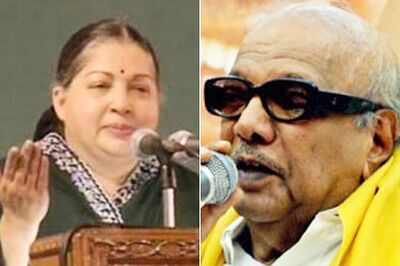
views
By calling for a united Opposition to take on Prime Minister Narendra Modi in 2024, Nitish Kumar has sought to give an ideological flavour to his defection from the NDA. In effect, the act was one of pure political opportunism, and not informed by any grand strategy to upset the NDA applecart.
Nitish has done no more than turn his coat inside out, motivated by a perceived existential threat to his party. To make his realpolitik more digestible for voters, he has sought to position the BJP-JD(U) split in Bihar as batting for democratic values. And willy nilly, the increasingly desperate anti-Modi brigade has pitched him as the great white hope of the Opposition.
Can Nitish keep his mahagathbandhan together in Bihar itself? While he has managed to bring the RJD, a friend-turned-foe-turned-friend, the JD(U), Left and Congress under a common umbrella, maintaining the alliance will require adroit handling of his partners. Particularly in light of the fact that he has very little wiggle room, now that he has closed the doors to the BJP.
If he succeeds, it will certainly prove expensive for the BJP. Given the social geography of Bihar, the mahagathbandhan can easily triumph, because in terms of simple electoral math it commands some 50 per cent of the popular vote. Nitish has carefully cultivated the EBCs, who account for a quarter of the state’s population, while the RJD has maintained its hold on the M-Y vote.
The question is whether the alliance can be scaled to cover more than one state. An array of contrasting agendas and interests disunites the Opposition. Is it at all possible to bring them onto the same platform? In politics, anything is possible, and certainly, the very fact of Nitish’s defection from the ruling NDA strengthens the Opposition and creates pressure for unity.
But Nitish, the hard-headed socialist, is well aware that he cannot superglue the regional parties together without a credible counter-narrative to the BJP. The regional parties need an overarching issue that can subsume their differences into a single-pointed campaign. Currently, no such issue exists. In addition, to sell itself to the electorate as a viable alternative, the Opposition needs to decisively differentiate its political ‘product’ from that of the BJP. What are the possibilities?
The tired ‘secularism versus communalism’ plank, basically a Leftist principle internalised by the Congress and caste-based parties, no longer finds subscribers across the board. The Aam Aadmi Party (AAP) and the Shiv Sena, for example, would be inclined to give the anti-Hindutva bandwagon a wide berth. Neither of them needs or wants to beat the secularism drum, especially at a time when the very concepts of secularism and multi-culturalism are under review across the world.
Despite price rise and inflation, the economy has not reached an inflection point. So, it does not proffer any electoral leverage. Unemployment, too, has limited appeal in the face of the elaborate architecture of welfarism built by the Modi government. Indeed, for all its problems, India with its robust agricultural production seems like a success story in comparison with the rest of South Asia. Nor is there any credible instance of corruption; the spectacular failure of the ‘chowkidar chor hai’ campaign is a case in point.
Can Mandal 2.0 serve as the issue du jour? This brings us to the BJP’s OBC-centric electoral strategy, which effectively dismantled Mandal 1.0. The long-standing M-Y (Muslim-Yadav) combine of the Mandal parties failed to withstand the BJP’s caste consolidation and Hindutva plank. In national elections, the BJP has walked away with the largest chunk of OBC votes (44 per cent in 2019), although in state elections, OBC voters tend to gravitate to regional parties.
For example, in neighbouring Uttar Pradesh, which accounts for 20 per cent of the BJP’s Lok Sabha seats, the Samajwadi Party did make gains in the Assembly elections earlier this year, probably by wresting a section of the non-Yadav OBC vote, but not enough to make a dent.
The regional parties are very keen on a caste census, for the simple reason that it is bound to throw up new numbers and spark a fresh round of social justice campaigns — precisely why the BJP is against it. RJD leader and Bihar deputy chief minister Tejashwi Yadav sought to unite Opposition parties on this issue last year, but failed. In any event, it has little resonance outside of UP and Bihar and most non-BJP chief ministers are neutral on the subject.
In the absence of a counter-story, the Opposition will need to make a mammoth effort to come together, by sinking personal egos and crafting a common agenda. Until then, even maintaining state-level alliances, like the mahagathbandhan in Bihar, will prove a challenge.
Read the Latest News and Breaking News here




















Comments
0 comment